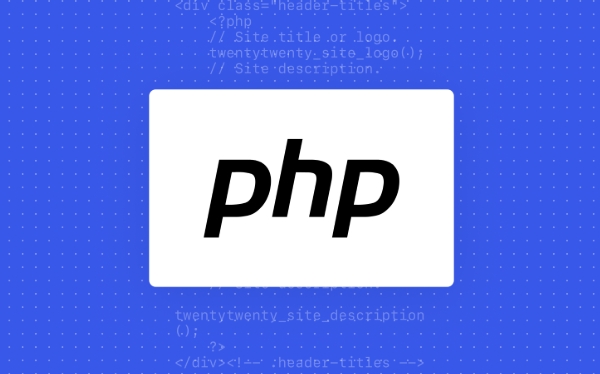 Backend Development
Backend Development
 PHP Tutorial
PHP Tutorial
 The Performance Implications of Using `break` in Large-Scale Iterations
The Performance Implications of Using `break` in Large-Scale Iterations
The Performance Implications of Using `break` in Large-Scale Iterations
Aug 02, 2025 pm 04:33 PMUsing break in large-scale iterations can significantly improve performance by enabling early termination, especially in search operations where the target condition is met early, reducing unnecessary iterations. 2. The break statement itself introduces negligible overhead, as it translates to a simple jump instruction, making the cost of the condition check more impactful than the break. 3. When loops are expected to run to completion, break offers little benefit and may reduce readability, so unnecessary break checks should be removed or logic restructured. 4. In compiled or JIT-compiled languages, break may affect loop optimizations like unrolling or vectorization, but modern compilers handle predictable early exits well, especially in common patterns. 5. Best practices include using break when early exit is likely, avoiding redundant condition checks, profiling with real data, and considering optimized built-in functions like any(), next(), or find() for clarity and performance. Break is most effective when used judiciously based on expected data patterns and loop behavior.

Using break in large-scale iterations—such as loops that process thousands or millions of elements—can have meaningful performance implications, both positive and negative, depending on context. While break is a control flow statement designed to exit a loop early, its impact on performance isn't always obvious. Below are key considerations.

1. Performance Gains from Early Termination
The most significant benefit of break is avoiding unnecessary iterations. In scenarios where a condition is met early (e.g., searching for a specific item), break can drastically reduce execution time.
Example: Linear Search

items = list(range(1_000_000))
target = 500
for item in items:
if item == target:
print("Found!")
breakWithout break, the loop would continue through all 1 million items. With break, it stops at iteration 501—cutting runtime by ~99.95%.
This kind of early exit is especially valuable in:

- Searching algorithms
- Validation checks
- Polling or retry loops with success conditions
Bottom line: When the desired condition is likely to be met early, break improves performance substantially.
2. Negligible Overhead of break Itself
The break statement itself introduces minimal runtime overhead. It’s a simple jump instruction at the bytecode level (in languages like Python, Java, or C#) or a direct assembly jump in compiled languages.
You should not avoid break due to fear of performance cost from the keyword. The cost of the check (e.g., if item == target) dominates the cost of executing break.
Key insight: The condition check matters more than the break. If checking the condition is expensive, optimize that—not the use of break.
3. When break Offers Little Benefit
In cases where the loop will almost always run to completion, break adds little value and may even hurt readability.
Example: Processing all items in a batch
for record in large_dataset:
process(record)
if record.is_last: # Rare or never true
breakIf is_last is never or rarely true, the break check becomes dead code—adding a conditional without benefit.
In such cases:
- Remove unnecessary
breakchecks - Or restructure logic (e.g., slice the data beforehand)
4. Interaction with Compiler and JIT Optimizations
In compiled or JIT-compiled languages (e.g., Java, C#, Go), the presence of break can affect optimization opportunities:
- Loops with predictable exit conditions may be unrolled or vectorized
breakcan prevent certain optimizations if the exit point is non-uniform
However, modern compilers are generally good at handling early exits, especially in predictable patterns (like searching).
In performance-critical code (e.g., inner loops in scientific computing), consider:
- Using sentinel values
- Restructuring to avoid frequent condition checks
- Profiling with and without
break
5. Best Practices for Large-Scale Loops
To maximize performance when using break:
- Use
breakwhen early termination is likely—especially in search or validation - Avoid redundant condition checks just to trigger
break - Profile real-world data—a loop that breaks early on average case may still be slow in worst case
- Consider alternatives like
any(),next(), orfind()methods, which are often optimized and more readable
Example (Pythonic alternative):
found = any(item == target for item in items)
This is often faster and clearer than a manual loop with break.
Using break wisely in large iterations can save significant time. The key is knowing when early exit is probable and avoiding unnecessary checks. The statement itself isn’t costly—misuse is.
Basically: break early, break often—but only when it makes sense.
The above is the detailed content of The Performance Implications of Using `break` in Large-Scale Iterations. For more information, please follow other related articles on the PHP Chinese website!

Hot AI Tools

Undress AI Tool
Undress images for free

Undresser.AI Undress
AI-powered app for creating realistic nude photos

AI Clothes Remover
Online AI tool for removing clothes from photos.

Clothoff.io
AI clothes remover

Video Face Swap
Swap faces in any video effortlessly with our completely free AI face swap tool!

Hot Article

Hot Tools

Notepad++7.3.1
Easy-to-use and free code editor

SublimeText3 Chinese version
Chinese version, very easy to use

Zend Studio 13.0.1
Powerful PHP integrated development environment

Dreamweaver CS6
Visual web development tools

SublimeText3 Mac version
God-level code editing software (SublimeText3)
 How `break` Simplifies Complex Conditional Logic within PHP Loops
Aug 01, 2025 am 07:47 AM
How `break` Simplifies Complex Conditional Logic within PHP Loops
Aug 01, 2025 am 07:47 AM
Use break to exit the loop immediately when the target is found, avoiding unnecessary processing; 2. Reduce nesting conditions by handling boundary conditions in advance; 3. Use labeled break to control multi-layer nesting loops and directly jump out of the specified level; 4. Use guard clause mode to improve code readability and debugging efficiency, so that the logic is clearer and more complete.
 `break` vs. `continue`: A Definitive Guide to PHP Iteration Control
Aug 02, 2025 pm 04:31 PM
`break` vs. `continue`: A Definitive Guide to PHP Iteration Control
Aug 02, 2025 pm 04:31 PM
break is used to exit the loop immediately and subsequent iterations will no longer be executed; 2. Continue is used to skip the current iteration and continue the next loop; 3. In nested loops, break and continue can be controlled to jump out of multiple layers with numerical parameters; 4. In actual applications, break is often used to terminate the search after finding the target, and continue is used to filter invalid data; 5. Avoid excessive use of break and continue, keep the loop logic clear and easy to read, and ultimately, it should be reasonably selected according to the scenario to improve code efficiency.
 The Performance Implications of Using `break` in Large-Scale Iterations
Aug 02, 2025 pm 04:33 PM
The Performance Implications of Using `break` in Large-Scale Iterations
Aug 02, 2025 pm 04:33 PM
Usingbreakinlarge-scaleiterationscansignificantlyimproveperformancebyenablingearlytermination,especiallyinsearchoperationswherethetargetconditionismetearly,reducingunnecessaryiterations.2.Thebreakstatementitselfintroducesnegligibleoverhead,asittransl
 Mastering Loop Control: A Deep Dive into the PHP `break` Statement
Aug 02, 2025 am 09:28 AM
Mastering Loop Control: A Deep Dive into the PHP `break` Statement
Aug 02, 2025 am 09:28 AM
ThebreakstatementinPHPexitstheinnermostlooporswitch,andcanoptionallyexitmultiplenestedlevelsusinganumericargument;1.breakstopsthecurrentlooporswitch,2.breakwithanumber(e.g.,break2)exitsthatmanyenclosingstructures,3.itisusefulforefficiencyandcontrolin
 Escaping Nested Loop Hell with PHP's Numeric `break` Argument
Aug 04, 2025 pm 03:16 PM
Escaping Nested Loop Hell with PHP's Numeric `break` Argument
Aug 04, 2025 pm 03:16 PM
Using break's numerical parameters can break out of multi-layer nested loops and avoid using flag variables; for example, break2 can directly exit the two-layer loop, improving code readability and maintenance, and is suitable for scenarios where execution is terminated based on condition in multi-layer loops.
 From `break` to Functions: A Strategy for Improving Code Testability
Aug 03, 2025 am 10:54 AM
From `break` to Functions: A Strategy for Improving Code Testability
Aug 03, 2025 am 10:54 AM
Whenyouseeabreakstatementinaloop,itoftenindicatesadistinctlogicthatcanbeextractedintoafunction;2.Extractingsuchlogicimprovestestabilitybycreatingisolated,single-responsibilityfunctionswithclearinputsandoutputs;3.Thisrefactoringenablesindependentunitt
 PHP `break`: A Code Smell or a Necessary Control Structure?
Aug 04, 2025 am 11:01 AM
PHP `break`: A Code Smell or a Necessary Control Structure?
Aug 04, 2025 am 11:01 AM
breakisappropriateinswitchstatementstopreventfall-throughandinloopstoexitearlyforefficiency,suchaswhenamatchisfound;2.itbecomesacodesmellwhenusedindeeplynestedloopswithbreak2orhigher,orwhensimulatingearlyreturnsforerrorhandling,indicatingpotentialdes
 A Guide to Graceful Termination of Infinite Loops Using `break`
Aug 03, 2025 am 10:02 AM
A Guide to Graceful Termination of Infinite Loops Using `break`
Aug 03, 2025 am 10:02 AM
Usethebreakstatementtoexitinfiniteloopswhenaconditionismet,suchasuserinputortaskcompletion.2.Pairbreakwithclear,meaningfulconditionstoensureloopsremainreadableandresponsive.3.Avoidoverusingbreakbyemployingflagvariablesforcomplexlogictomaintaincodecla





